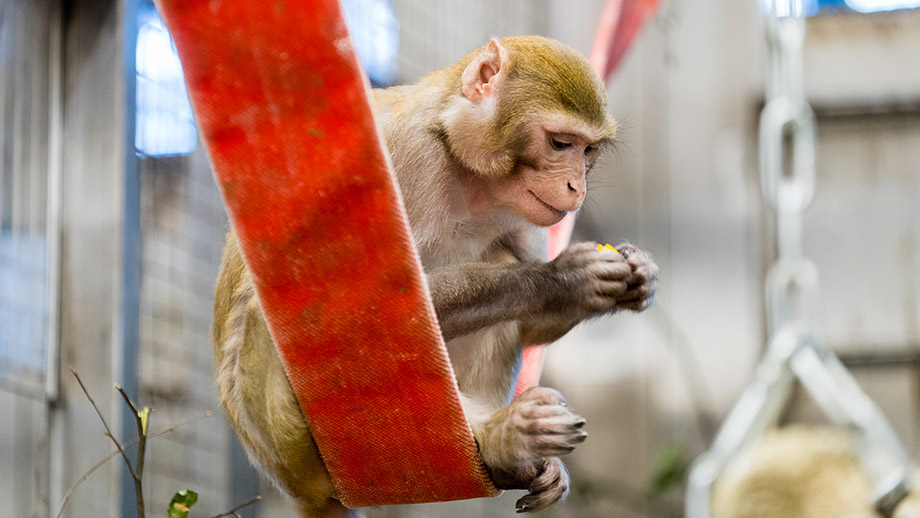Current Study Involving Primates
University of Zurich scientists conduct neuroscience research to better understand the causes of cognitive disorders, including those occurring in schizophrenia.
The aim of the study is to understand the functioning of a particular area of the brain – the prefrontal cortex. The prefrontal cortex evolved late in evolutionary history, with most prefrontal brain areas existing only in humans and apes. As a result, research on the current fundamental questions can only be done using non-human primates.
Understanding the prefrontal cortex
The prefrontal cortex enables humans to comprehend stimuli in context, to prioritize, to sort the significant from the insignificant, and to suppress impulses. In patients suffering from schizophrenia or attention deficit disorder (ADHD), such abilities are frequently impaired. Unfortunately, the functioning of the prefrontal cortex – how neurons cooperate in so-called executive functions – is still largely unexplained. Moreover, researchers also do not yet understand how and why the functioning of the prefrontal cortex is impaired in patients with a mental illness.
Basics for new therapies
The therapies currently in use treat only some symptoms and often have severe side-effects. And although the first therapies are over 50 years old, much remains to be understood about how they work. The research study involving macaques aims to advance understanding of the underlying neurological causes of mental illnesses, and to develop effective and safe therapies based on this knowledge.
The current project is led by Professor Valerio Mante. It builds on his previous research on macaques conducted at Stanford University, USA, which changed the understanding of neural circuits in the prefrontal cortex.
Intensity level of experiments
The severity of every animal testing project is classified according to a four-level system both "prospectively" at the time of the application, and "retrospectively" at the time of project completion. This classification system describes the level, intensity and duration of distress caused to the animals. As a result, an experiment that involves not more than minor distress, but is of long duration, is classified as intensity level 2.
The planned experiments have prospectively been assigned the highest intensity level (level 3). In practice however, the planned procedures generally cause only moderate distress of brief duration, or minor distress of long duration. For this reason, similar past tests in Zurich and other Swiss research institutions have retrospectively been classified as intensity level 2 - an outcome that has been confirmed by the Cantonal Veterinary Office on many occasions. A retrospective reclassification is also expected for the planned study, because procedural improvements realized since past experiments considerably reduce the stress on the animals.
Primate study approved by all instances
Upon recommendation by the Commission on Animal Experimentation (Tierversuchskommission), the Cantonal Veterinary Office (Veterinäramt) approved a corresponding application of the University of Zurich and the ETH Zurich to conduct animal testing using a new approach in July 2014. Three of the eleven members of the Cantonal Commission on Animal Experimentation appealed against this decision. On 11 December 2015, the Government Council of the Canton of Zurich denied the appeal and confirmed the positive decision on UZH’s application. The decision was referred to the Administrative Court by the appellants, which denied the appeal on 20 April 2017 and confirmed the positive decision of the Cantonal Veterinary Office.
